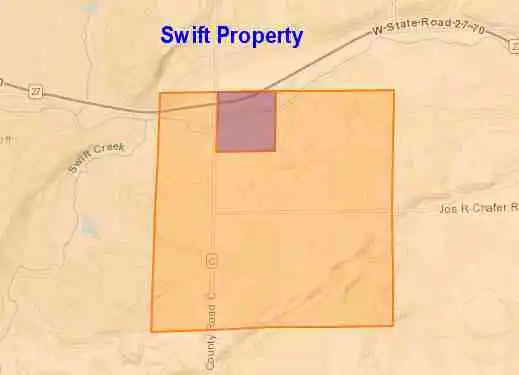Swift’s Dam (Couderay River)
Elijah Swift, a dealer in pine lands, logs, and lumber built a dam in T-38 N -R 8W Section 10 of Sawyer County where he owned 40 acres. Just to the west of the dam a creek now named Swift creek entered the Couderay River. Elijah was born in Falmouth, Mass., Nov. 19, 1831, and prepared for college at Andover, graduating from Harvard in the class of 1852. In July, 1862, he enlisted in the 38th Mass.; he was first lieutenant and quarter-master, and was on special service most of the time in engineer’s and quarter-master’s departments.
He was captured by the Rebels near Port Hudson in 1864, and retaken after one month’s imprisonment, and was mustered out at Boston in July or August, 1865.
After spending one year with his father he came to Oshkosh, and since December, 1870, has been a resident of Eau Claire. He was married in Willoughby, Ohio, Sept. 28, 1869, to Mrs. Myra J. Bliss, a daughter of Jeremiah Evans, one of the pioneers of Geauga Co., Ohio. Mrs. Swift died in Florida, Feb. 27, 1881, leaving three children – Eliza Robinson, Oliver Franklin and Elijah Kent, and one son by her former marriage, Carlton Munn Bliss, who is now a student at Beloit College.
The original Little Falls dam near Holcombe WI was built in 1878 also by Elijah Swift and Joseph Viles for the Chippewa River Improvement and Log Driving Company. It was big for the time, a wooden dam 625 feet wide and 16 feet high with 32 floodgates. Its main aim was to provide reliable water for floating logs downstream, even when natural water levels were low. With its gates wide open, it could raise the Chippewa 3 feet and raise waters 100 miles downstream.
Parts of the dam were washed out by floods in 1880 and 1884. After the second washout, a dam-building specialist named Billy “the Beaver” England was brought in. He and his crew rebuilt the dam in the winter of 1884-1885 and it survived the floods for many years after.
The journal of the dam’s keeper from 1882 to 1890 still survives, briefly describing log drives, jams, and the flood of 1884. A terrible accident occurred in 1905, when eleven log drivers drowned trying to get to a log jam near the dam. The dam functioned until 1910, when logging operations ceased. It washed out in the 1920s. The current hydro-electric dam was built in 1950 by the Wisconsin-Minnesota Light and Power Company, producing the current Holcombe Flowage.





